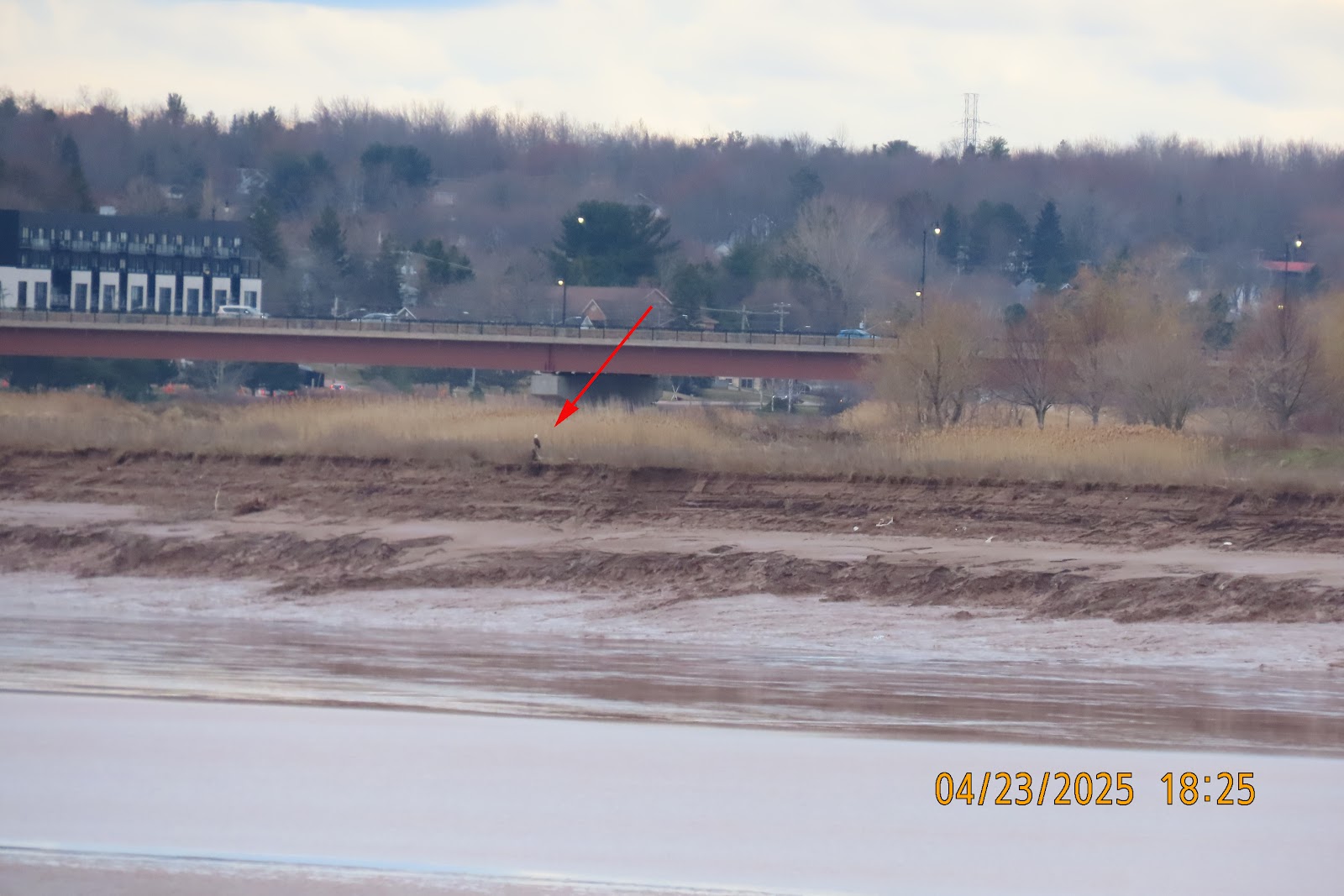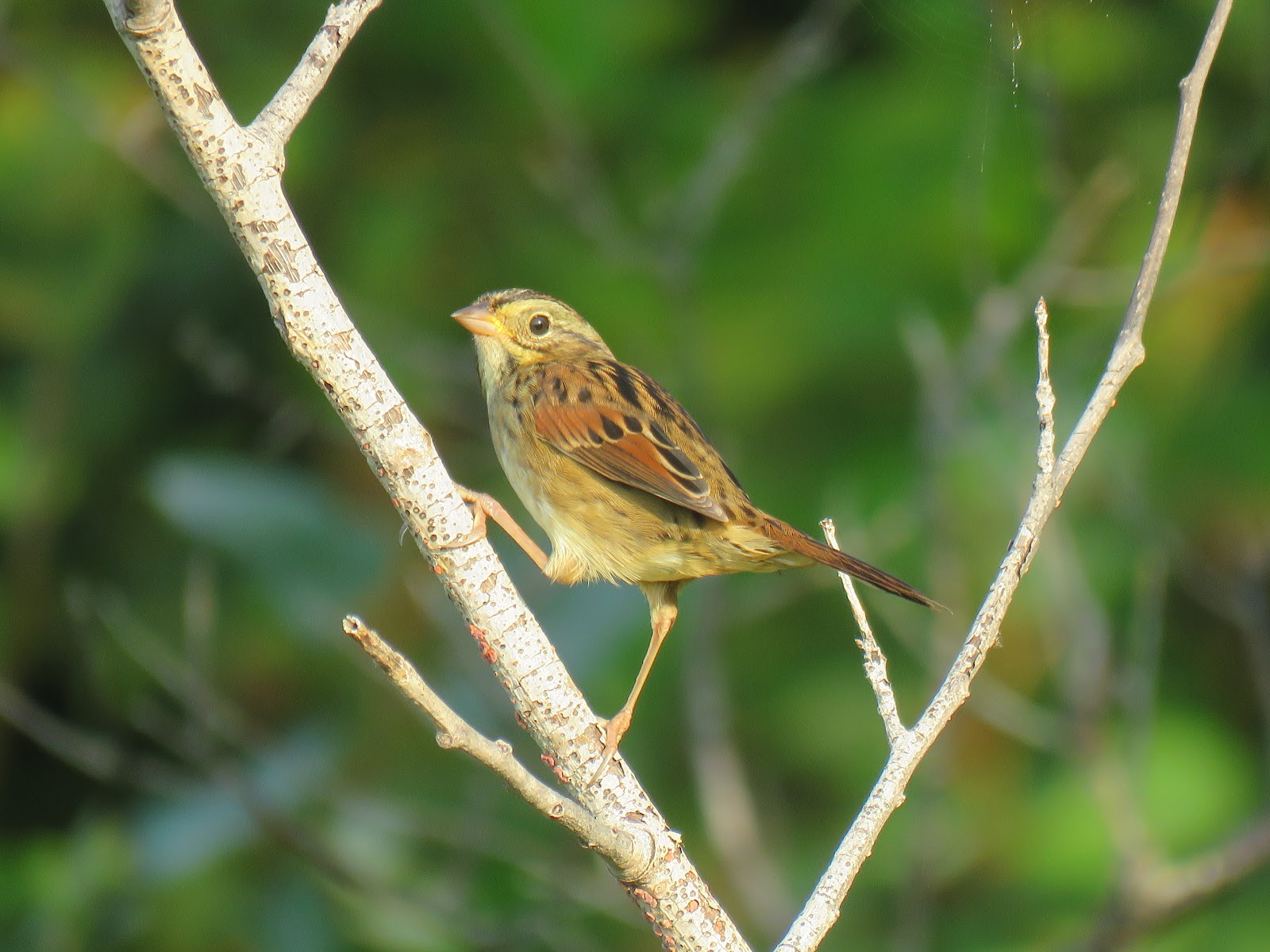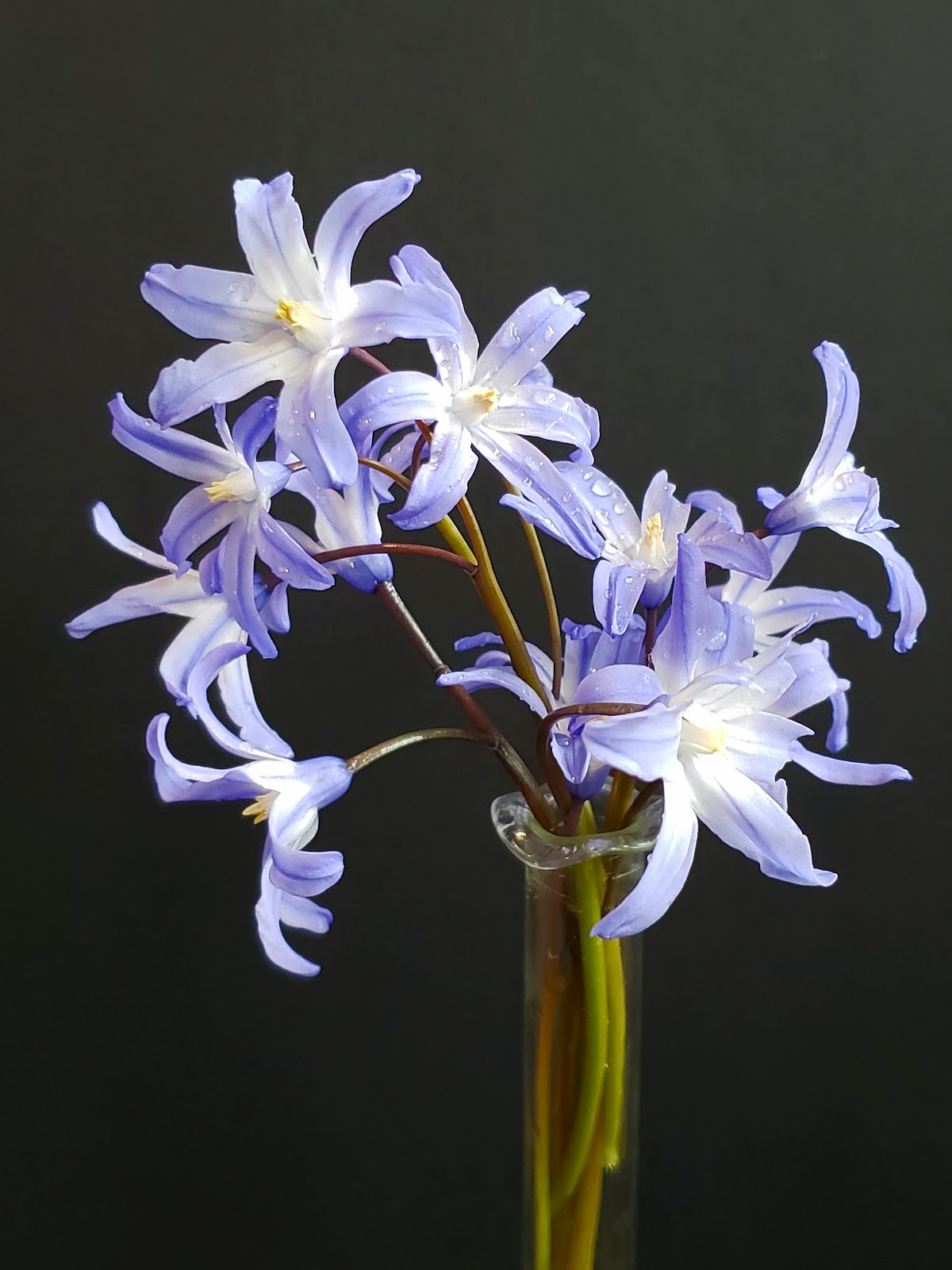NATURE
MONCTON NATURE NEWS
April 27, 2025
Nature Moncton members, as
well as any naturalist in New Brunswick or beyond, are invited to share
their photos and descriptions of recent nature sightings to build a fresh
(almost) daily edition of Nature News
To
respond by e-mail, please address your message to the information line
editor, nelsonpoirier435@gmail.com .
Please
advise the editor at nelsonpoirier435@gmail.com and the proofreader
Louise Nichols at Nicholsl@eastlink.ca if
any errors are noted in wording or photo labelling.
For more information
on Nature Moncton, check the website at www.naturemoncton.com
Proofreading
courtesy of Nichols nicholsl@eastlink.ca
To
view the live feed of the Peregrine Falcon nest cam on the summit of Assumption
Place in Moncton, go to:
**On Saturday afternoon, Cathy Simon and Jessica
Belanger-Mainville made the trip to Sackville to see the recently reported greater
white-fronted goose. Cathy got a documentary photo of the goose amongst a
large flock of Canada geese. Later, the goose flew to a farmer's field nearby although still quite far out of range of her camera. The second documentary
photo does show the black splotching on the belly.
**Shannon Inman was back at Harvey Dam watching the double-crested cormorants fishing at their favourite fishing hole. The smaller prey photographed is suspected to be a white sucker while the honker prey (for a cormorant) may be an alewife/blue-back herring. At home, a white breasted nuthatch visited.
**Jane LeBlanc managed to get a documentary photo of four species at her bird feeder at the same time on Saturday morning before the rain
started. They included a female northern cardinal, male purple finch,
white-throated sparrow, and red-breasted nuthatch.
**Georges Brun was down at the
Landing (on Petitcodiac River) early on Saturday and came across a mixed flock
of two species of scoters: black scoters and a surf scoter.
A little upriver from the flock, he photographed two long-tailed ducks.
This was a first for Georges on the
Petitcodiac River.
Earlier in the week, he had the chance to photograph the
first arrivals of great blue herons downriver at the bend of the river,
and again the following day close by the Moncton Public Wharf near the construction
of the new storm outlet east of the Classic Burger Restaurant.
The bald eagle (arrowed) was perched on a tree stump just south of the Moncton Press Club.
**Tuesday was the clean-out day for the nesting boxes on
Fred and Sue Richards’ property, their neighbours' boxes , and the boxes
installed on hydro poles on Taylor Road in Taylor Village. Fred Richards
used his handy extension ladder and cleaned out, dusted, and sprayed
27 boxes. They saw no swallows flying around that day, but their neighbours
had seen them.
(Editor’s note: this note is a bit late (editor’s error)
but wanted to show the very handy and useful extendable ladder Fred is using.
The editor has one as well and highly recommends them.)
**David Lilly recently did a nature sleuthing mission on
the Airport Road, north of Fredericton. He was able to photograph two of our
earlier expected warblers, a male yellow-rumped warbler and a palm
warbler. David also photographed a male belted kingfisher, a sharp-shinned
hawk, and painted turtles in the same area.
**Ann and Donald MacPhail pass along a spring-filled
report from that unique and special part of New Brunswick, Deer Island. Their
report is paraphrased below:
It started with the American woodcocks showing up in mid-March.
The yellow-bellied sapsuckers, which we only see in spring and fall, have
been around the apple trees. Hermit thrushes have arrived but have not started
singing yet. We have had a couple of waves of northern flickers, and the
belted kingfisher is back rattling around his favourite waterhole.
Hundreds of American robins have passed through, and purple finches and American
goldfinches are both at the feeders with many types of sparrows – fox, song, tree,
chipping, and, this week in the marsh, swamp sparrow. Blackbirds passed through
in a few waves, and one evening, an American bittern flew up out of the
cattails. The eastern phoebe is back too. In the woods, they see both
kinglet species and hear the ruffed grouse thumping and the barred owl
hooting. Warblers have started arriving – palm warblers have been around
at least a week and yellow-rumped warbler males arrived a day or so ago. They
think the peregrine falcon is back at their cliffside aerie after what has
apparently been a tough avian influenza winter for that species.
And finally, yesterday, after months of no
sightings, they saw a red-breasted nuthatch.
**Leon Gagnon contributed a photo of a sparrow he
photographed in the fall on Miscou Island, uncertain about its identity.
The editor felt it was a dickcissel due to the yellow blush on the head and the
chestnut coverts that seem so clear.
Gilles Belliveau pointed out that it was actually a swamp
sparrow, which in the fall can show fairly prominent yellow at the
front of the face, typically in the lores and sometimes in the supraloral and
at the base of the malar. Some show more yellowish tones than others, but this
could also be due to colour saturation issues caused by white balance, as green
backgrounds can often result in elevated warm tones if the white balance of the
camera is set to auto or is set for a cloudy day. Take a close look at Leon’s
photo.
Fall plumages can be challenging, as we all know!
**White-breasted nuthatches have been very
infrequent visitors at Barb Curlew and Rick Elliott's Waterside home. On April
11, one showed up briefly at their feeder, but had been evading the camera
until April 26 when it lingered and posed very conveniently.
**Pat Gibbs has a tiny flower in full bloom in abundance
at the moment, glory-of-the-snow. Pat assumes it was planted by the
former property owners. The seesaw frosts we have had essentially killed off
98% of the crocuses, but they didn't seem to bother this plant. It keeps
popping up in odd places all over her lawn, and there is even some growing on
the traffic island across the street from her home.
(Editor’s note: The literature suggests this ephemeral
cultivar is very frost resistant and spreads wildly, which would make it a good early pollen source for bees.)
**A small but mighty crew gathered at the Riverfront
trail to take action for nature by picking up garbage. The Club picked up
garbage in the same area last year and is pleased to report that there was less
to pick up this year. Special thanks to our special guests who joined us:
Ashley from Acadia Toyota and Shane O from MAX FM.
Nelson Poirier.
Nature Moncton






















